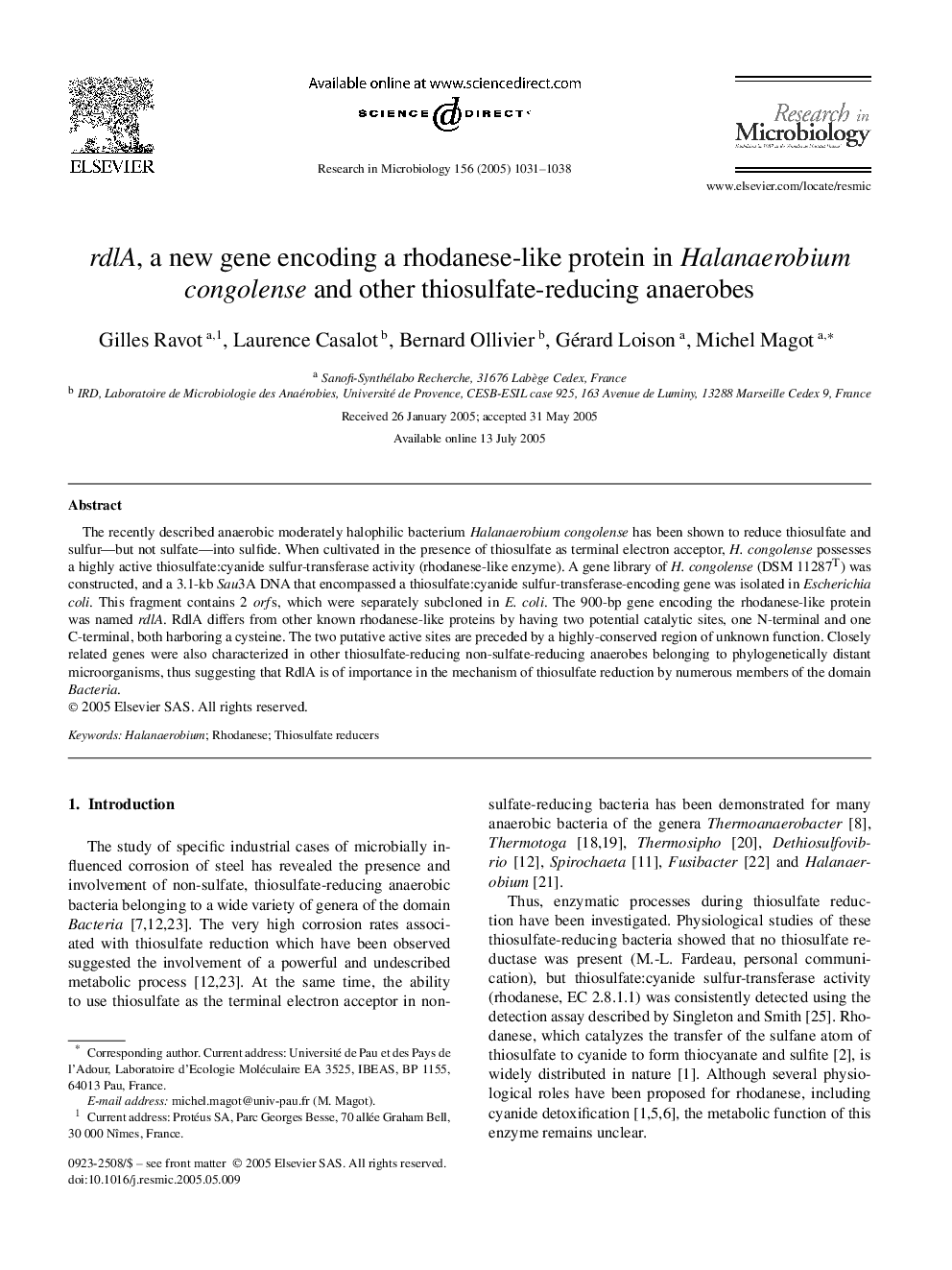| Article ID | Journal | Published Year | Pages | File Type |
|---|---|---|---|---|
| 9439900 | Research in Microbiology | 2005 | 8 Pages |
Abstract
The recently described anaerobic moderately halophilic bacterium Halanaerobium congolense has been shown to reduce thiosulfate and sulfur-but not sulfate-into sulfide. When cultivated in the presence of thiosulfate as terminal electron acceptor, H. congolense possesses a highly active thiosulfate:cyanide sulfur-transferase activity (rhodanese-like enzyme). A gene library of H. congolense (DSM 11287T) was constructed, and a 3.1-kb Sau3A DNA that encompassed a thiosulfate:cyanide sulfur-transferase-encoding gene was isolated in Escherichia coli. This fragment contains 2 orfs, which were separately subcloned in E. coli. The 900-bp gene encoding the rhodanese-like protein was named rdlA. RdlA differs from other known rhodanese-like proteins by having two potential catalytic sites, one N-terminal and one C-terminal, both harboring a cysteine. The two putative active sites are preceded by a highly-conserved region of unknown function. Closely related genes were also characterized in other thiosulfate-reducing non-sulfate-reducing anaerobes belonging to phylogenetically distant microorganisms, thus suggesting that RdlA is of importance in the mechanism of thiosulfate reduction by numerous members of the domain Bacteria.
Keywords
Related Topics
Life Sciences
Immunology and Microbiology
Applied Microbiology and Biotechnology
Authors
Gilles Ravot, Laurence Casalot, Bernard Ollivier, Gérard Loison, Michel Magot,
